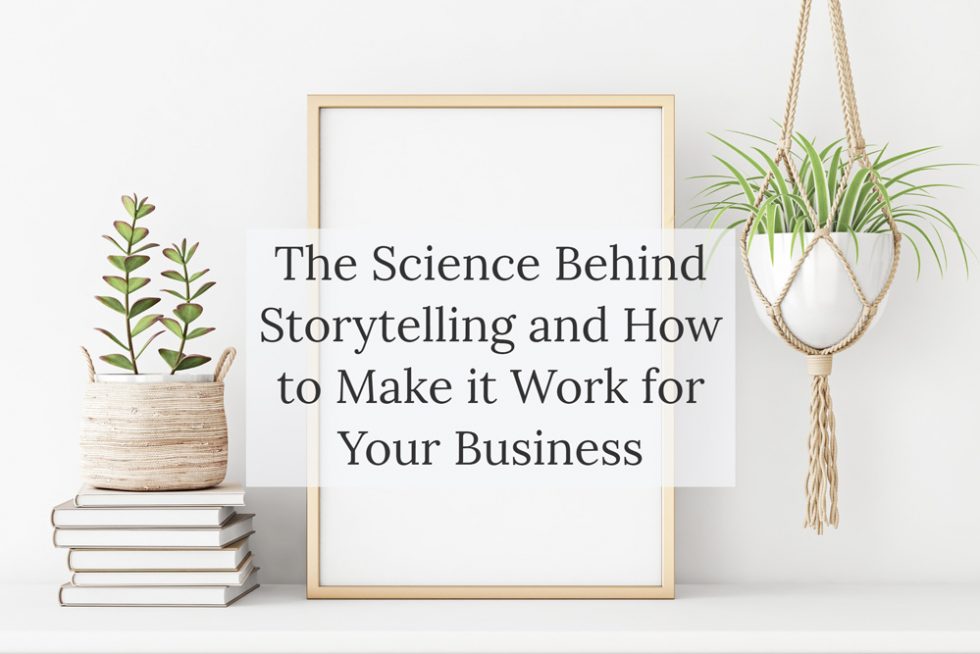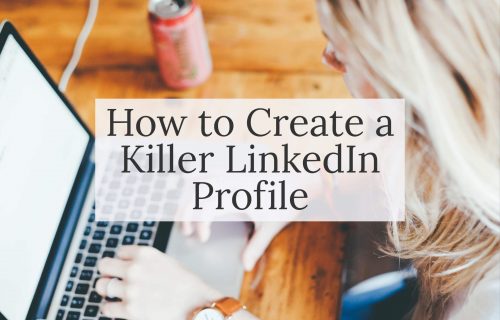
The Science Behind Storytelling & How to Make It Work for Your Business
Last night, I registered for a charity walk that raises money to support research on blood cancer. It’s an issue that’s important to me. After I registered, I noticed the charity had posted stories on their website written by people affected by blood cancer. Some of the stories were written by survivors, while others were written in memory of loved ones. Reading the words and imagining the experiences of the people who wrote the stories brought me to tears — in only a matter of seconds.
I know I’m not alone.
I’m sure you’ve had a similar experience where you’ve come across a story that’s moved you. Many of those stories probably stayed with you for some time.
That’s because we’re attracted to stories.
They inspire us, intrigue us, upset us, motivate us to act, and make us feel connected. Stories create rich images in our mind – especially those that activate our sense of sight, touch, taste, sound, and smell. Stories can make our eyes sting with tears or bring us to laugh out loud – in the same way that real life experiences do. Stories make us feel an emotion, just by imagining an event.
For businesses and organizations that want to connect with their audience, storytelling is an effective way to do so. Scientists and marketers both agree: storytelling works.
Why Storytelling Works So Well
The science of storytelling has been well studied by both academics and practitioners (including many marketing experts). Studies have been done to understand the impact that storytelling has on our ability to engage with issues and place value on information. This has shown that storytelling is a powerful way to fire up our brains.
But why is storytelling so effective?
1. We are wired to learn through stories.
Storytelling is part of our everyday experience.
As children, we were told stories that passed on social values and frameworks for understanding the world.
As adults, we communicate information through stories, just as we seek them out to understand ideas.
For instance, remember a time a close friend went through a major life event. You probably asked your friend to share with you all of the details – from start to finish. You wanted to understand the sequence of events, the emotions experienced, and the outcome. In other words, you wanted to learn about their experiences through their story.
Or, take the rise of TED Talks. There’s a good reason they’re so popular. Almost all TED Talks follow a similar storytelling structure, composed of a main character, a problem, a solution, and an outcome.
A recent study has also shown that we tend to remember information better when it’s presented as a story, rather than just a list of facts. That’s because our mind seeks out stories to better understand the world around us.
2. Our brain reacts to stories by releasing oxytocin.
Paul Zak, a researcher at Berkeley University, has conducted several fascinating studies looking at what happens to our brain when we hear or read a story. He found that stories actually change the way our brains work by altering our brain chemistry — much more so than when we receive information without a storyline.
The most powerful factor is the release of cortisol and oxytocin. Cortisol is released when we feel distress from a story, while oxytocin then makes us feel empathic, compassionate, generous, and charitable. This explains how stories motivate people to take actions – such as donate to a cause or make a purchase.
Since oxytocin also makes us feel good — after all, it’s dubbed the love hormone — this could explain why storytelling has remained a popular part of culture throughout generations.
3. We like to develop relationships – and stories help us do that.
When we meet someone for the first time, they often feel distant. We don’t know who they are, so we start asking questions to learn more. As we discover what they do, where they came from, and where they live, we begin to feel closer to them. We start developing a sense of connection and trust. We begin to make sense of the person and we start to see them as a friend.
This is what storytelling does. It makes unfamiliar people familiar. It helps us understand people, contextualize people, and (if we deem them worthy) trust people.
As Zak states in an article: “By knowing someone’s story—where they came from, what they do, and who you might know in common—relationships with strangers are formed.”
4. Our brains reacts to fictional stories as if they were real life encounters.
Stop and think about the last time you read a tragic story or watched a sad movie. Did you get so caught up in the emotions of the story that you actually felt them? Stories can do this to us. They can transport the reader into the character’s world, as if it is their own. It’s a phenomenon that happens regularly – yet we rarely stop to think about it.
Once we are drawn into a story, we begin to visualize the characters, see the landscape, and feel the emotions that characters feel. That means even though we are not living the experience, we might cry, or smile, or feel distress. In this way, we begin to live an experience that is presented to us.
An article in The New York Times reported that: “The brain, it seems, does not make much of a distinction between reading about an experience and encountering it in real life; in each case, the same neurological regions are stimulated.”
This makes storytelling an exceptionally powerful way to enter your audiences’ life and influence their behaviour.
How to Tell a Good Story
If storytelling is a powerful way to connect with others and inspire action, what can you do to maximize your chances of telling a great story?
This is a question that researchers, writers, fundraisers, and marketing professionals have spent a long time trying to understand. And, with good results. It turns out that there are universal narratives and literary tricks that can be used to tell a powerful story.
As Copyhackers states in a famous blog post: “If you apply a storytelling framework to conversion-focused copywriting, you can inspire people to action and keep them hooked in a long-term relationship with your brand”.
So what makes for a good story?
1. The story should be immersive.
An immersive story is defined as a story that transports the reader into the character’s world and holds them there long enough to experience the emotions of the character.
This can be done in a few ways:
- Stories that are personal and emotionally captivating are particularly immersive.
- Words that are unique and draw on sensory experiences are more effective than commonly used words. For instance, one study showed that the brain becomes more activated when we read the passage “The singer had a velvet voice,” than “The singer had a pleasing voice”.
- Another study showed that stories that have a magical element can also create a more immersive experience. That’s because they trigger the brain to go deeper into the imagination.
- A final study showed that videos have a good chance of creating immersive experiences.
2. The story should have a well-crafted plot arc.
Stories that build tension slowly, introduce challenges, and ultimately end in resolution, tend to have the best success when it comes to storytelling.
This has been demonstrated time and again by academics, as well as by content marketing gurus who have adapted Joseph Campbell’s and Christopher Volger’s idea of the hero’s journey to fit brand storytelling. The hero’s journey is essentially a universal plot framework that involves adventure, challenge, transformation, and return. In brand storytelling, copywriters and marketers develop plot arcs by showing how existing customers have overcome challenges, experienced transformations, and reaped benefits through their experiences with the brand.
3. The story should have a main character with relatable qualities.
Relatable main characters help the audience connect with the story and experience similar emotions.
When it comes to marketing and copywriting, the main character of a brand story should resemble the target audience. In other words, the story should be about your customer — not the brand. Customer-centric stories work best, and allow the brand to show how they fit into the customer’s journey.
In Summary
Storytelling is powerful tool. It connects strangers, triggers emotions, and allows us to know each other in a deeper and more meaningful way. This can work for businesses and organizations, just as it works between individuals. Knowing the science behind storytelling — and some of the tactics of good storytelling — can help you craft content for your business that connects with and engages your audience.
Now it’s over to you. How are you using storytelling for your business or organization? What has worked particularly well for you?




Add A Comment
You must be logged in to post a comment.